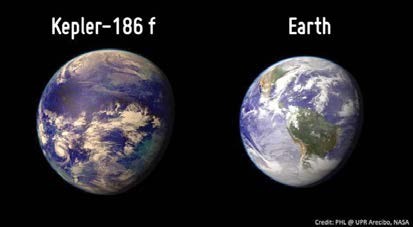Finding Earths Among the Stars

By Robert Marshall
On a clear night you step outside, look up and ponder the idea of intelligent beings up there — somewhere — looking back. Then it strikes you that the odds are probably unlikely. How many other Earth-like planets are out there in our Milky Way galaxy?
You might be surprised to learn that astronomers often rely on estimations, given the seemingly infinite number of objects in the Universe, the tremendously vast amounts of space that separate everything and how time plays a factor in what we Earthlings can witness in a lifetime. In order to answer the question of how many Earth-like planets orbit Sun-like stars in their habitable zone (the area of a solar system where liquid water could exist), scientists have to develop techniques to comb through a population of stars not too large to be overwhelming but not too small to provide false scalable data.

Using the space-based telescope Kepler, and other ground-based instruments to confirm results, NASA researchers recently announced that they have identified the 1000th exoplanets in a patch of sky slightly larger than your hand held out at arm's length containing roughly 100,000 stars. More exciting results suggest eight of the confirmed are Earth-size in habitable zones. While this seems like a small value considering the fact that Kepler is only identifying transients, an observation method in which planets eclipse their parent stars and which relies on the solar system's inclination: itself a less than one percent chance.
Using these figures, astronomers have estimated that most Sun-like stars have planets even if not Earth-like. And at least one in six stars has an Earth-size planet. As our technology improves, scientists will fine-tune these numbers and eventually increase the likelihood of discovering life elsewhere
Extension Questions
- Research what the parameters of the Drake Equation are and make a guess for every ratio. Multiplying them together will calculate odds of finding alien intelligence.
- Kepler is just one mission of many hunting for exoplanets. How many other confirmed planets have been found and what about number of candidates? What is the difference?